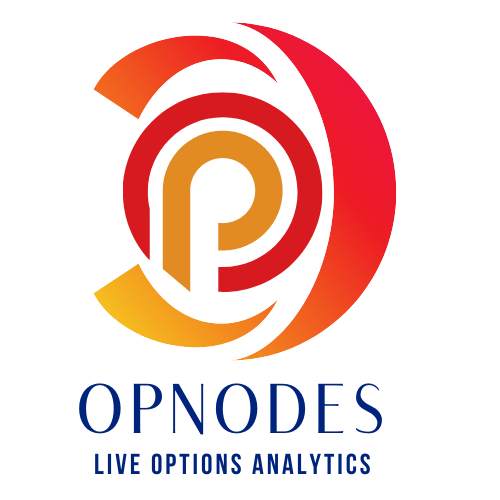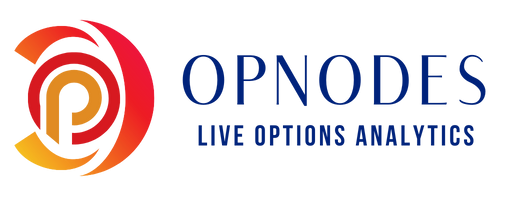| Participants | Client | Change | DII | Change | FII | Change | Pro | Change |
|---|---|---|---|---|---|---|---|---|
| Future Index Long | 275982 | -22816 | 56817 | 9 | 90876 | 3471 | 77015 | -4511 |
| Future Index Short | 205341 | -9874 | 80758 | -2500 | 174729 | -5436 | 39862 | -6037 |
| NET Future Index | 70641 | -12942 | -23941 | 2509 | -83853 | 8907 | 37153 | 1526 |
| Participant's View | ⬤ Bullish | ⬤ Bearish | ⬤ Bearish | ⬤ Bullish | ||||
| Option Index Call Long | 4305800 | 165772 | 0 | 0 | 907870 | 77100 | 1560286 | 69704 |
| Option Index Call Short | 4325571 | 405636 | 0 | 0 | 906212 | 60786 | 1542173 | -153846 |
| NET Option Index Call | -19771 | -239864 | 0 | 0 | 1658 | 16314 | 18113 | 223550 |
| Participant's View | ⬤ Bearish | ⬤ Bullish | ⬤ Bullish | |||||
| Option Index Put Long | 3665102 | 1153705 | 24754 | 0 | 1006217 | 74685 | 1473941 | 109464 |
| Option Index Put Short | 3921986 | 969238 | 0 | 0 | 899434 | 128569 | 1348594 | 240047 |
| NET Option Index Put | -256884 | 184467 | 24754 | 0 | 106783 | -53884 | 125347 | -130583 |
| Participant's View | ⬤ Bullish | ⬤ Bearish | ⬤ Bearish | ⬤ Bearish | ||||
| Future Stock Long | 1898044 | -5559 | 89680 | 6032 | 1562708 | 8697 | 526437 | 17238 |
| Future Stock Short | 228454 | -1382 | 2218386 | -6048 | 1429056 | 30257 | 200973 | 3581 |
| NET Future Stock | 1669590 | -4177 | -2128706 | 12080 | 133652 | -21560 | 325464 | 13657 |
| Participant's View | ⬤ Bullish | ⬤ Bearish | ⬤ Bullish | ⬤ Bullish | ||||
| Option Stock Call Long | 1570493 | 56270 | 47 | 26 | 100518 | 9499 | 509845 | 9931 |
| Option Stock Call Short | 939861 | 33362 | 146378 | 7183 | 130996 | 1464 | 963668 | 33717 |
| NET Option Stock Call | 630632 | 22908 | -146331 | -7157 | -30478 | 8035 | -453823 | -23786 |
| Participant's View | ⬤ Bullish | ⬤ Bearish | ⬤ Bearish | ⬤ Bearish | ||||
| Option Stock Put Long | 556895 | -367 | 40 | 0 | 90845 | 4425 | 599513 | 13296 |
| Option Stock Put Short | 742630 | 11033 | 0 | 0 | 83873 | 1265 | 420790 | 5056 |
| NET Option Stock Put | -185735 | -11400 | 40 | 0 | 6972 | 3160 | 178723 | 8240 |
| Participant's View | ⬤ Bullish | ⬤ Bearish | ⬤ Bearish | ⬤ Bearish | ||||
Participant-wise open interest is a crucial concept in the world of financial markets, particularly in the context of derivative trading. It helps market participants, analysts, and regulators gauge the level of interest and positions taken by various categories of market participants. To understand participant-wise open interest, it’s essential to first define the key participants involved:
- Client:
- Definition: Clients are individual retail traders or institutional investors who trade in the derivatives market through brokers. They are typically end-users of derivatives, using these financial instruments to hedge against price fluctuations in the underlying assets or to speculate on future price movements.
- Role in Open Interest: The open interest position of clients represents the number of contracts or positions held by retail and institutional investors.
- Domestic Institutional Investors (DIIs):
- Definition: DIIs are entities like mutual funds, insurance companies, and pension funds that invest in financial markets on behalf of their clients or policyholders. They primarily manage domestic funds and investments.
- Role in Open Interest: DIIs’ open interest positions reflect the collective positions taken by these institutional investors in the derivatives market.
- Foreign Institutional Investors (FIIs):
- Definition: FIIs are overseas entities, such as hedge funds, asset management companies, and pension funds, that invest in the financial markets of a foreign country. They participate in Indian markets through the purchase of securities, including derivatives.
- Role in Open Interest: FIIs’ open interest positions indicate the extent of their involvement in the Indian derivatives market.
- Proprietary Trading Firms (Pros):
- Definition: Proprietary trading firms are trading entities that use their own capital to speculate on the financial markets. They engage in trading activities to generate profits for their own accounts rather than on behalf of clients.
- Role in Open Interest: The open interest positions of proprietary trading firms reflect the proprietary trading activity in derivatives. These firms often engage in high-frequency trading and may have substantial positions.
How open interest is calculated and why it’s important:
Open Interest: Open interest is the total number of outstanding derivative contracts, such as futures and options, for a specific underlying asset. It represents the total number of contracts that have not been settled or offset by an opposing trade. Open interest is calculated at the end of each trading day and provides valuable insights into market sentiment:
- Increasing Open Interest: When open interest increases, it indicates that new positions are being created in the market. This can suggest growing bullish or bearish sentiment, depending on whether contracts are being bought or sold.
- Decreasing Open Interest: A decrease in open interest suggests that existing positions are being closed or offset. This can indicate a lack of conviction or a potential reversal in market sentiment.
- Steady Open Interest: Stable open interest levels can indicate a balanced market where long and short positions are roughly equal.
- Participant-wise Open Interest: By examining open interest data for different participant categories (Client, DII, FII, Pro), analysts can gain insights into who is driving market activity. For example, a significant increase in open interest by FIIs might signal a strong bullish or bearish outlook, depending on their positions.
In summary, participant-wise open interest is a critical metric in derivatives markets, providing valuable information about market sentiment and the involvement of various types of participants. It is an essential tool for traders, investors, and analysts to assess the dynamics and trends within the market.

